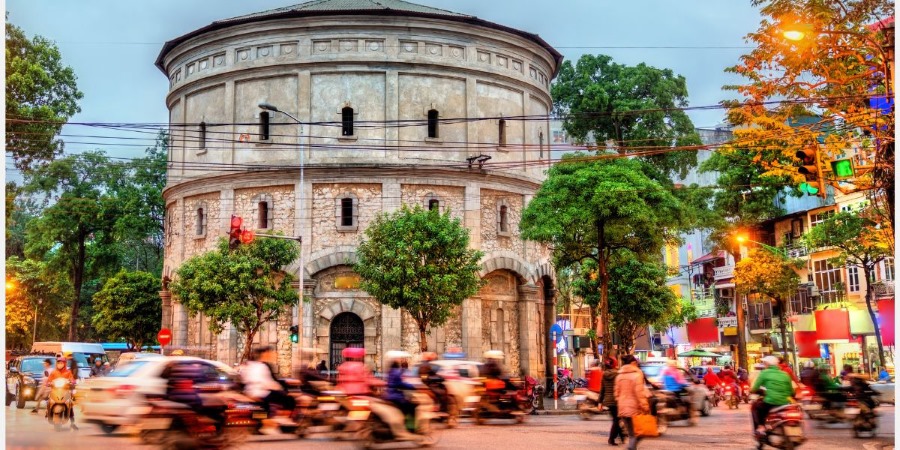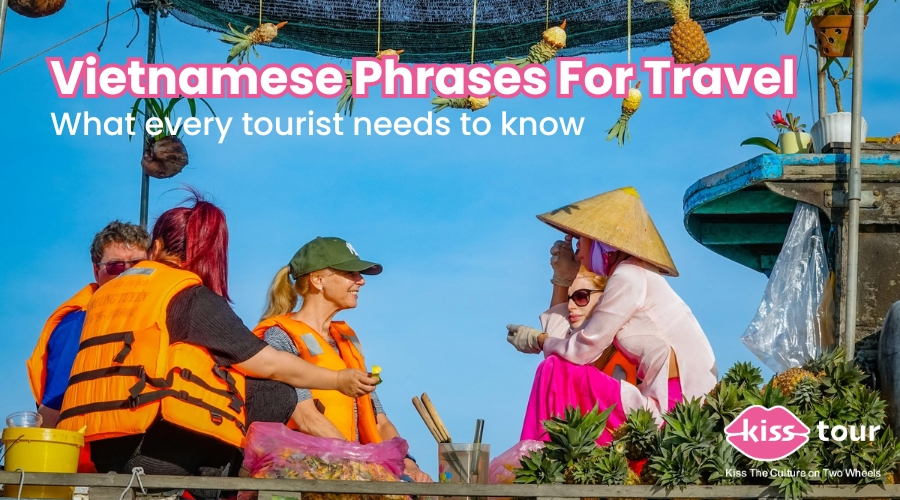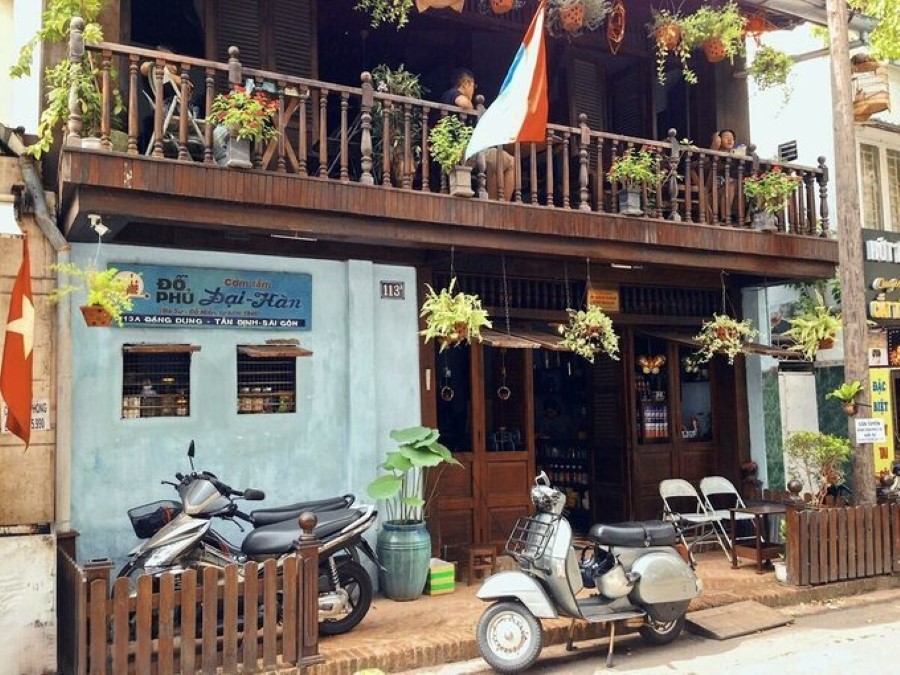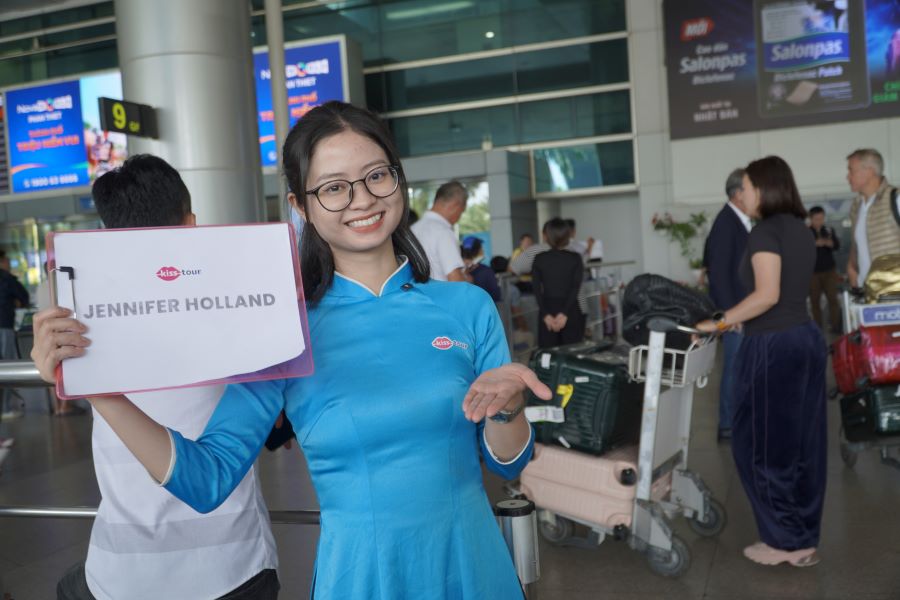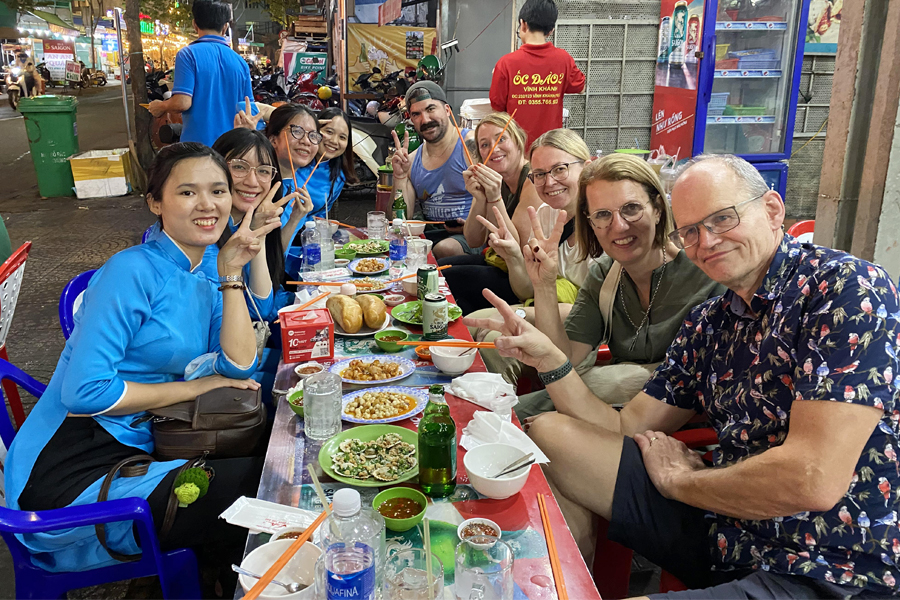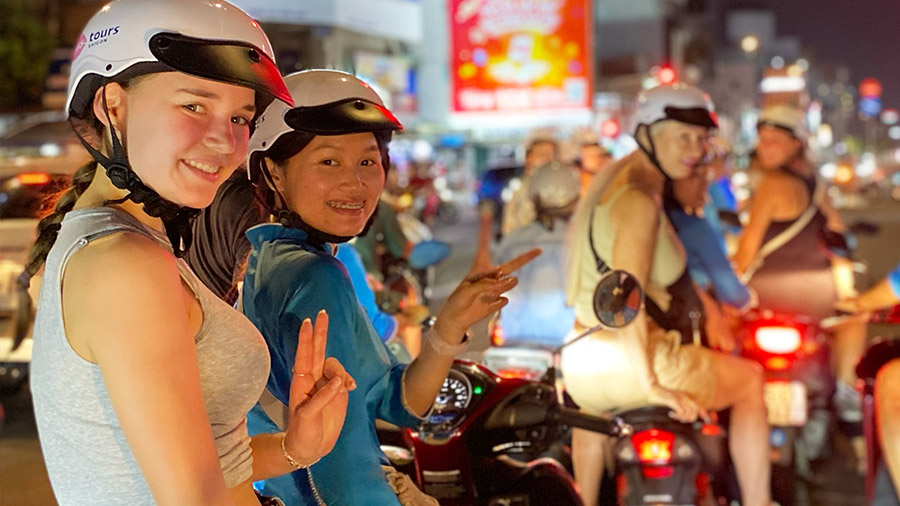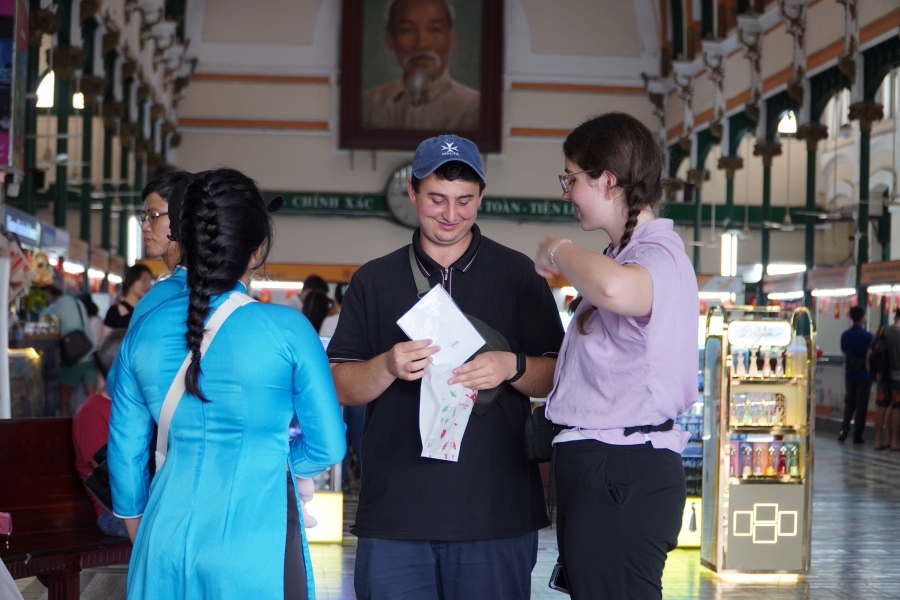Vietnamese traffic can sometimes be scary for many tourists, but it is also an interesting experience for those who love to explore. Let’s join KissTour to learn in detail about Vietnam traffic culture and pick up some necessary tips for enjoying your trip.
What are the roads like in Vietnam?
Transport infrastructure in Vietnam is improving significantly compared to 10 years ago, especially in big cities such as Hanoi and Ho Chi Minh City. However, with dense population density and the rapid increase of personal vehicles, many roads often suffer and narrow during rush hours.

Vietnam’s traffic in most cities. | Source: Wikimedia Commons.
While less crowded during rush hour, roads in suburban and rural areas often lack quality, posing unnecessary risks to drivers.
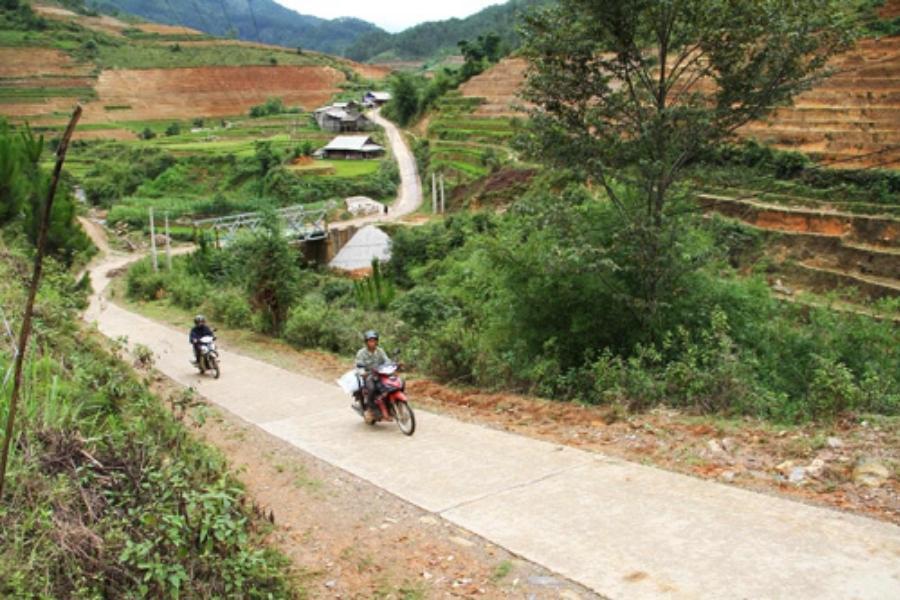
Rural and suburban roads. | Source: Anh Tuan – TTXVN
How can Vietnamese people drive on crazy roads?
One of the unforgettable impressions of tourists when coming to Vietnam is the skillful motorbike driving of the local people. At intersections, the image of hundreds of motorbikes weaving through traffic in a seemingly chaotic yet harmonious rhythm is a sight to behold.
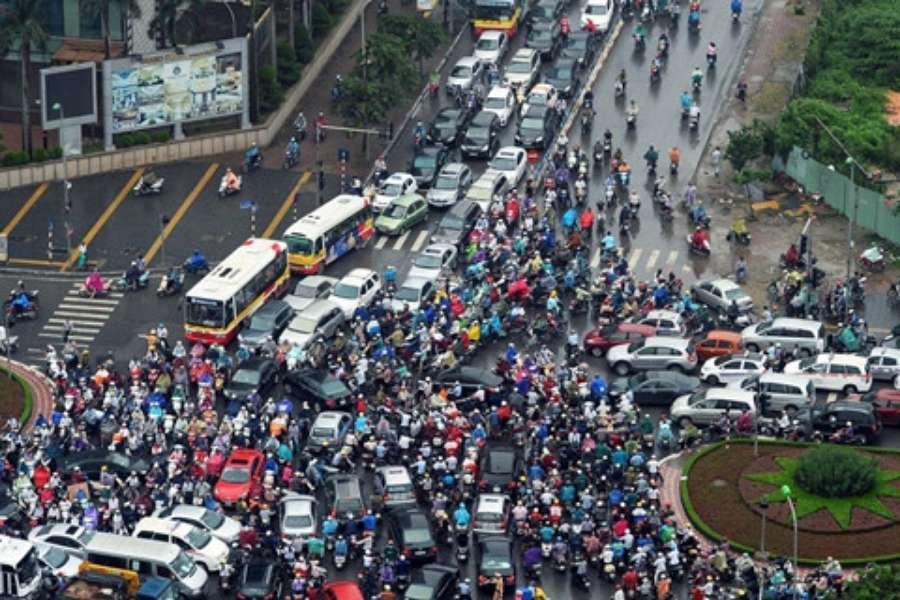
The driving skills of Vietnamese people impress the tourists. | Source: nld.com.vn
Faced with traffic chaos every day, Vietnamese people have long considered driving one of the necessary life skills for anyone living in this bustling country. Small motorbikes weave through corners with agility, while larger vehicles, such as cars and buses, navigate the busy streets, creating a seemingly chaotic yet surprisingly orderly traffic flow.
A Safety Guide for Foreign Passengers in Vietnam Traffic
Vietnam’s bustling streets offer a unique cultural experience, but it’s crucial to prioritize safety. While foreigners are typically not permitted to drive in Vietnam due to legal restrictions, understanding local traffic rules is essential for passengers.
One of the most important safety measures when participating on Vietnam traffic is wearing a helmet. This rule applies to all motorbike riders and passengers, regardless of age or experience. While you may see locals disregarding this rule, especially in rural areas, it’s crucial to prioritize safety and always wear a helmet.
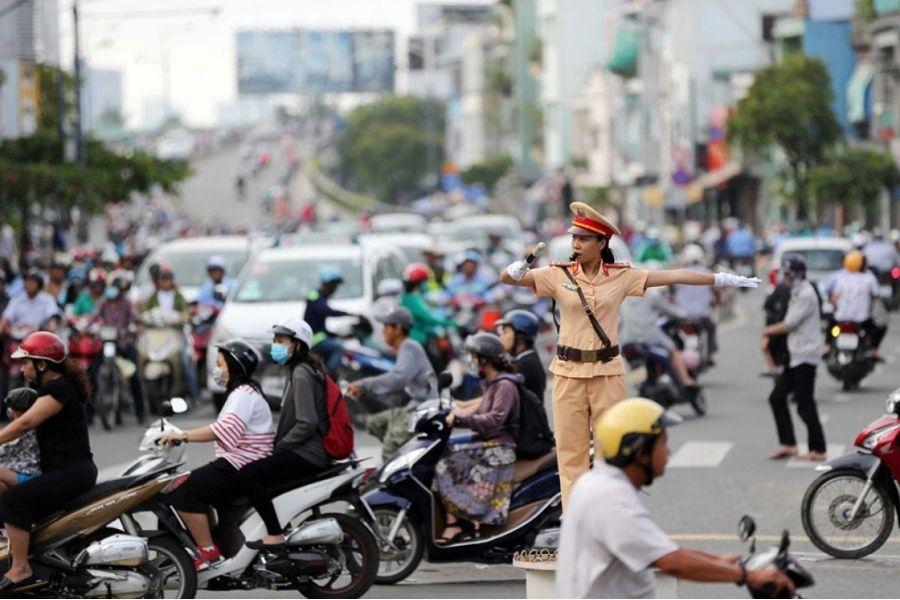
Understanding Vietnam traffic rules is essential for passengers. | Source: Internet
Additionally, it’s essential to be aware of your surroundings and communicate any concerns to the driver. Pay close attention to traffic signals, road signs, and the behavior of other road users. If you notice any potential hazards or feel unsafe, don’t hesitate to speak up.
Here are some specific tips for passengers:
- Stay alert: Keep an eye out for potholes, uneven surfaces, and other road obstacles.
- Hold on tight: Grip onto the driver or the bike itself to maintain balance, especially when going over bumps or making turns.
- Avoid distractions: Refrain from using your phone or other distractions while on the bike.
- Be mindful of your belongings: Secure your belongings to avoid losing them during the ride.
By following these guidelines, you can contribute to a safer and more enjoyable experience while exploring Vietnam.
Pocket some tips for handling traffic in Vietnam

Traffic congestion in big cities. | Source: Internet.
If you are a foreign tourist or have just moved to Vietnam, please refer to some of the following tips to better adapt to Vietnam Traffic:
- To avoid the hustle and bustle of peak hour traffic in Hanoi and Ho Chi Minh City, plan your travels outside of the morning rush (7-9 AM) and evening rush (5-7 PM). This will help you save time and enjoy a more relaxed journey.
- In heavy traffic situations, patience is the key. Moving too fast or trying to overtake can lead to unnecessary risks. By keeping a steady pace, you will ensure your safety.
- The horn is not only a personal sound but also a polite way to signal your presence to surrounding vehicles. So do not hesitate to honk when necessary, but you also need to use it delicately to avoid annoying other drivers.
- To ensure a safe and enjoyable motorbike experience, take cues from local drivers. Instead of rushing, observe the traffic flow and adjust your speed and route accordingly. By blending in with the local driving style, you’ll feel more confident and comfortable, even in the busiest of traffic.
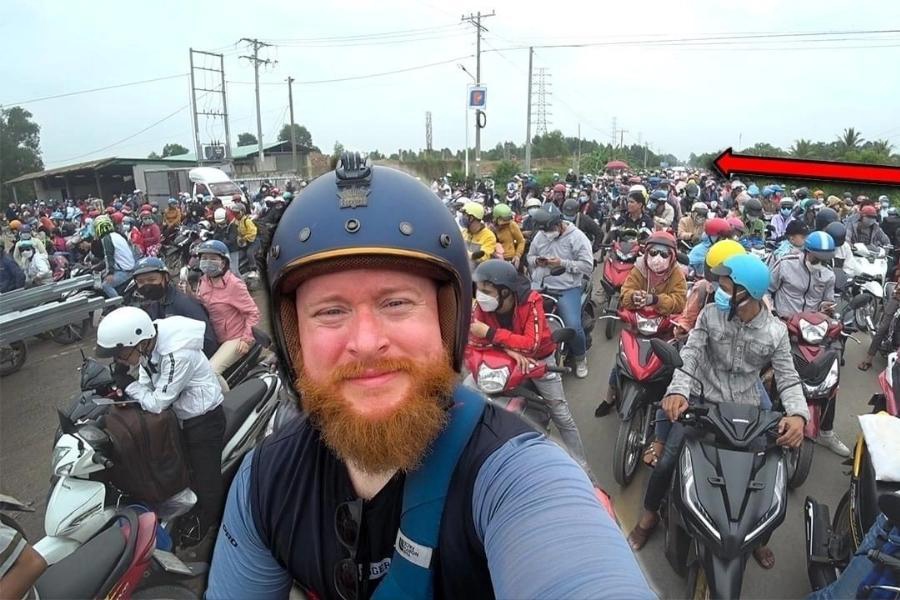
Brandon Hurley (American nationality) shares his experience participating in Vietnam traffic. | Source: Brandon Hurley.
FAQs for travelers about Vietnam traffic
1. What should I do if I get into a traffic accident?
If you’re involved in a traffic accident, it’s important to remain calm and assess the situation. Prioritize safety and seek medical attention if necessary by calling 115. Contact the local authorities and exchange information with the other parties involved.
>>> Read more: Emergency Numbers in Vietnam | Comprehensive Guide for Travelers
2. What should I do if I’m stopped by the police?
- Remain calm and polite.
- Avoid offering bribes.
- Request to see the officer’s identification.
- If you’re unsure about the situation, consider seeking assistance from your embassy or consulate.
3. What are the common road hazards in Vietnam?
Some common road hazards in Vietnam include:
- Potholes and uneven roads,
- Poorly lit roads,
- Animals crossing the road,
- Drunk drivers,
- Sudden lane changes.
4. What are the best ways to get around in Vietnam?
- Motorbike: A popular choice for adventurous travelers, but requires a valid international driving license and caution. Booking a local motorbike tour is also a worry-free way to explore the culture and cuisines there.
- Taxi: A convenient option, but be aware of potential scams and overcharging.
- Grab or XanhSM: Reliable ride-hailing apps that offer affordable and safe transportation.
- Public transportation: Buses and trains are affordable but can be less convenient in some areas.
- Walking: A great way to explore cities and towns, especially in areas with pedestrian-friendly streets.
5. How can I avoid getting scammed or overcharged by taxi drivers?
To avoid scams or overcharging, it’s best to use reputable ride-hailing apps like Grab, XanhSM and Be. You can download these applications to book a car on your phone in a short amount of time. If you must use a traditional taxi, ensure the meter is running and agree on a fare before starting the trip.
>>> Might be helpful: Top Vietnam travel apps you need to know
Vietnam Traffic is an integral part of culture and daily life. To move safely on busy roads, everyone needs to understand the rules to protect themselves and those around them. Through this article of KissTour, we hope you can confidently handle all challenges when participating in Vietnam traffic during your trip!
